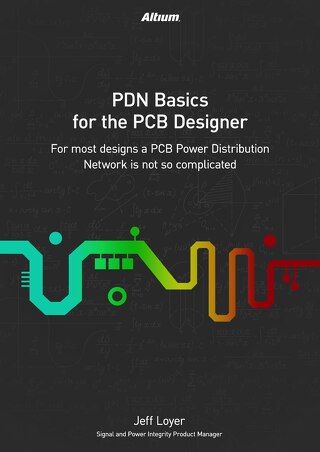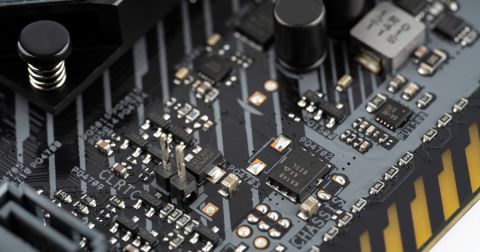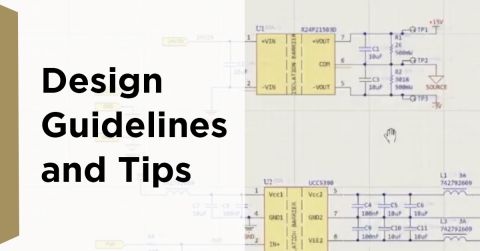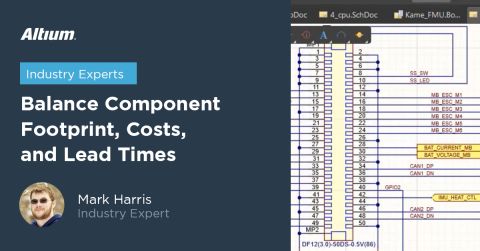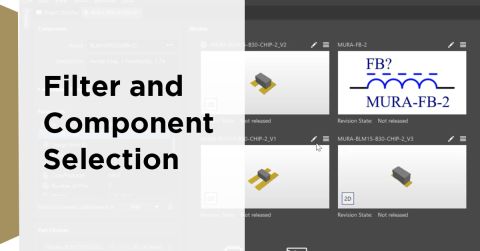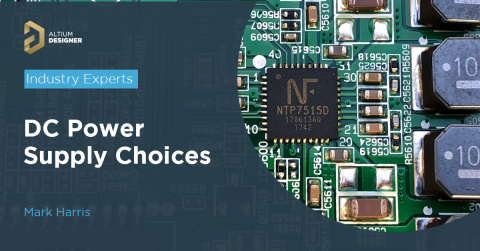AC to DC Power Supply Design

Domestic and industrial AC supplies offer the most convenient energy source for powering electrical devices in applications where a lead connecting the device to a power socket is not an issue. The only problem is that the vast majority of electrical devices require low DC voltages, and hence AC to DC conversion is required. There are various options available to achieve this, and a few things to bear in mind as you proceed with designing your AC to DC power supply.
Basic Principles
AC to DC converter operates by feeding alternating current into reactive impedance elements to store alternating energy and release steady-state energy. Inductors and capacitors form the reactive components while filtering components then smooth the output to form the DC output.
Output regulation is applied to ensure the output remains at a constant voltage, or at least within the specified range for the connected circuitry. The output voltage can be affected by fluctuations in the input AC voltage and the load applied to the output. The reactive components alone cannot implement this regulation; additional circuitry will be necessary.
Input filtering is also commonly required to manage noise and fluctuations typically seen at the wall socket.
Supply Isolation
Supply isolation is the electrical separation of the high voltage AC input from the low voltage DC output, putting a barrier between the two that will prevent hazardous input voltages from passing across to the output. Typically isolation is implemented using a transformer. This is considered the safest option for mains connected devices and benefits in preventing ground loops and surge protection.
However, non-isolated power supplies are available as an option as they are physically more compact and electrically more efficient than isolated power supplies. The downside is the potential safety concerns and surge vulnerabilities that limit their application and impose design constraints.
Rectification
The conversion of AC to DC can be achieved using rectification, with a broad range of semiconductor-based components available. Traditional rectifiers were constructed using diodes, but efficiency improvements are possible using power MOSFETs for active rectification.
Half-wave rectifiers are the more simple components but produce significant levels of output ripple. Full-wave rectifiers are far more common, provide better performance and a significantly smoother output.
Rectifiers are typically used to convert the output of a transformer from low voltage AC to an equivalent DC voltage. For diode-based rectifiers, the DC voltage will be lower due to voltage drop across the diodes. The efficiency of the rectifier is defined as the conversion ratio, simply the ratio of DC output power to the AC supply input power. Inefficiencies come from transformer losses and heat dissipation in components.
Switched-Mode Power Supplies
Linear power supplies convert high voltage AC into low voltage AC using a transformer and then use a rectifier to convert from AC to DC. On the other hand, Switched-mode supplies convert high voltage AC into high voltage DC, which generates a high-frequency signal that is stepped down and rectified into the output DC voltage.
Switch-mode power supplies (SMPS) are more complex, but they are significantly more efficient, potentially around 80% compared to 60% for a linear equivalent. They are also more compact in size and require less heat dissipation. The downside to SMPS is they are less reliable than the simpler linear power supplies, have a slower transient response, and are more susceptible to noise.
Surge Protection
When connecting any electrical device to a wall socket, it's vital to remember that main supplies are prone to surges. These can be caused by thunderstorms or other electrical equipment nearby. The requirement for including surge protection circuitry will depend on the sensitivity of the components that are fed by the power supply. Check out this article on lightning surge protection for electronics.
Overcurrent Protection
One feature of AC-connected power supplies is their ability to deliver large currents if required. The downside is that any fault in components connected to the power supply can cause large currents to flow through the power supply circuitry, potentially causing expensive consequential damage and possibly resulting in a fire. Including overcurrent protection is good practice for circuits where short circuit faults could cause excessively large currents to flow unchecked.
Off-The-Shelf Solutions
There are thousands of AC to DC converters available in the market, so unless your device has some peculiar or bespoke requirements, this may well be the simplest, quickest, and cheapest option. Check out this article on external power supply efficiency ratings.
Device Certification
Any device plugged into a mains socket must be certified to the local standards for the country it's used in. The certification process typically involves rigorous evaluation in an independent test laboratory, a time-consuming and costly endeavour. The certification has two main goals. First, prove that the device is safe to use – no risk of electrocution or causing a fire. Second, it will not adversely affect any other devices connected to the same power supply – such as emitted electrical noise or interference. For one-off projects or products with a low production run, using an off-the-shelf power supply will offer cost benefits over certification of a new bespoke AC to DC converter.
Have more questions? Call an expert at Altium and discover how we can help you with your next PCB design. You can download a free trial of Altium Designer here.
